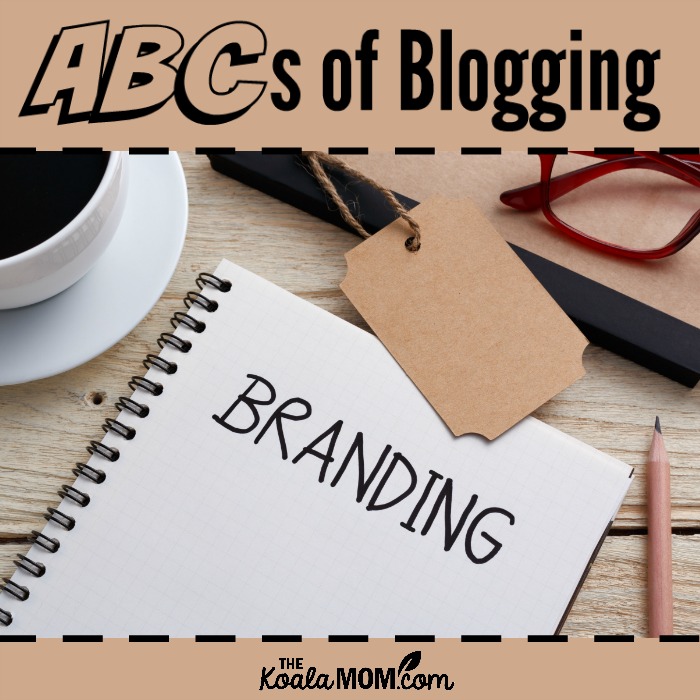My girls can spot the golden arches of McDonald’s from miles away. It’s one of their favourite restaurants and we hear frequent requests to stop there (though we usually only stop when we’re on road trips back to Alberta). What does this have to do with blogging? Well, McDonald’s has found success in their branding. Even two-year-olds recognize the restaurant and know what to expect there. There’s a lot you can learn from McDonald’s about branding your blog.

This post contains affiliate links; as an affiliate, I earn from qualifying purchases.
You want your readers to recognize your brand, whether they drop by your blog or see you on one of your social media channels. Branding is about creating the right look and feel for your blog to attract the right readers—just as McDonald’s attracts kids.
While branding your blog, think about:
- Why you blog—what is your purpose and mission statement? What problems do you solve for your readers? How can your brand help convey that to your readers?
- Who is your brand for? It should be obvious that a blog for men will look different than a blog for women, but get more specific than that in defining your readership. Are you reaching out to single ladies or married women? Older moms or younger moms? How can your brand attract your target audience and make them feel welcome?
- Who are you? And who are your competitors? Your brand should help you stand apart and distinguish you from other bloggers within your niche. If your logo, colours, or style is too similar to another blogger’s, you’ll confuse your readers and potentially lose them.
What does your brand look like?
Branding your blog involves using the answers to the above questions to create the right visuals. Think about the look of McDonald’s and how it’s instantly recognizable to every toddler. You want to achieve that for your blog—but how? Here are some things to consider:
- Images: do you take your own pictures or use stock photos? Where do you put your watermark? Do you include text on your images? What size are your images?
- Colours: what colours represent your brand? Are these consistent throughout your blog (and social media), from your logo to your headers to your images? Pick two or three colours you’ll use.
- Profile picture: this should be a professional photo of your face. Use the same profile picture across all your social media channels and on your blog to make it easy for readers to recognize you.
- Logo: if you don’t have a logo yet, I strongly recommend hiring a designer and getting one. Again, this should be used across all your social media channels (click on my social media buttons to see how I do that). Your logo should also be your watermark for your photos.
- Font: what fonts do you use on your blog? Like colours, I recommend picking two or three and sticking with them for your images, headers, sidebar, logo, etc.
What does your brand feel like?
Branding your blog goes beyond the visuals, though. All those visuals work together to create the feeling or atmosphere of your blog. Branding goes beyond just the look of your blog, though. It should also be personality you convey online. Think about the tone you use in your writing. Is it formal? Conversational? Sardonic? Encouraging?
Think also about how you respond to negativity from your readers and whether you deal with controversial topics. For example, Susan from 5 Minutes for Mom says they want their blog to be a positive space for moms, so they don’t engage in controversy. I tend to avoid negativity, so I will delete negative comments and share only positive, encouraging things on social media.
Putting all together
If this feels overwhelming, take a deep breath. You don’t have to create your brand overnight. My brand has slowly evolved over the course of my blogging career. As you think about your brand, I recommend looking through your Google analytics to see who your audience is and what your popular posts are.
Browse some of your favourite blogs and think about how they create their brand—notice what fonts and colours they use, how they create their images, the tone of their writing, etc. Then start applying that to your own blog.
It pays to keep in mind that different blogs and their content can have different ways making their brand work. It’s not a one size fits all process. Being adaptable make it easier to project and market your brand or product, whether through social media marketing or through a different platform offline.
As you do this, you’ll want to create a brand guide for yourself. It can be handy to have all of this written down, from the exact colours and fonts you’ll use to the image sizes you prefer. This also makes it easy to glance at your guide and make sure that you’re staying true to yourself and your audience. Your content should fit your brand; if an idea seems off-brand, then your blog probably isn’t the place to post it.
Further Reading:
- Branding Your Blog: You’re Doing It All Wrong
- Branding for Bloggers: Visuals Make Your Blog Stand Out
- What Disney World Can Teach You About Branding Your Blog
- Brand Yourself: A no-nonsense brand toolkit for small businesses
- Advertising, Branding & Marketing 101: The Small Business Owner’s Guide to Making Marketing More Effective.
- Website Branding for Small Businesses: Secret Strategies for Building a Brand, Selling Products Online, and Creating a Lasting Community
 Have you worked on branding your blog? What helped you figure out your brand?
Have you worked on branding your blog? What helped you figure out your brand?

One Response
Such good advice. Having a defined brand is so important.
Laina